Chrome Browser
Sundar Pichai, who headed up today's presentation, began with a few stats on the browser's success. It's grown to about 120 million active users, he said, up from about 70 million not too long ago. The single most common conversion factor: Chrome is fast. Now the Chrome team is trying to make it faster.
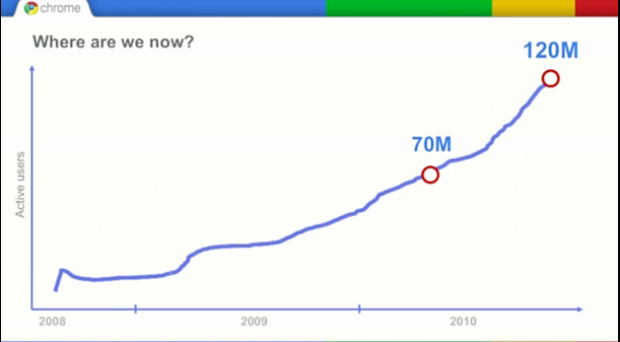
Google Instant integration. We already have Google Instant, the real-time search engine that shows results with each letter typed. The Chrome team has brought that to its browser, and now results show as they do on Instant when searching from the address bar. What's more, commonly visited websites load automatically in real-time, without having to hit Enter. Usually visit ESPN, or Twitter, or CNN? Typing E will load ESPN instantaneously, T for Twitter, and C for CNN.
Built-in PDF reader. One of the worst parts of the browsing experience is loading PDFs. They either pop-up out of the browser or require a plug-in to load. Regardless, PDFs are slow. The Chrome team developed a native reader; now PDFs as large as the recent health care legislation load just as fast as a one page document.
Hardware Acceleration. Web pages are becoming more and more graphically intense, and Chrome--following the example of other browsers, such as Internet Explorer 9--is amping up its efforts to provide better hardware acceleration and HTML5 support.
Crankshaft. Google has worked hard at improving its Java support, and according to Pichai, a new service called Crankshaft has allowed the browser to become fifty times faster over the past two years.
Chrome Web Store & Apps
"It looks very different than a webpage today," began Pichai. "[These are] very rich, visual, interactive applications."
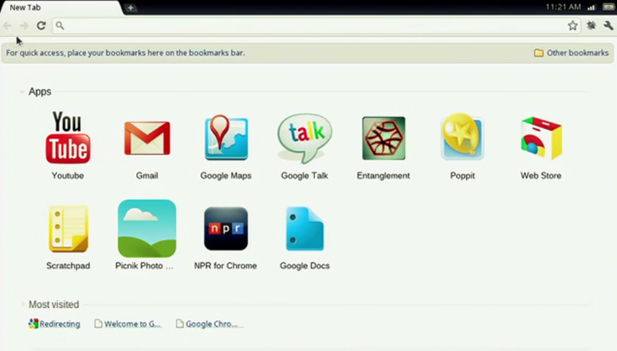
The new Chrome Web Store is essentially the browser-based equivalent of Apple's app store. Much like Microsoft aimed for with Internet Explorer 9, Google is trying to bring that experience of apps off your mobile phones and to your laptops and desktops.
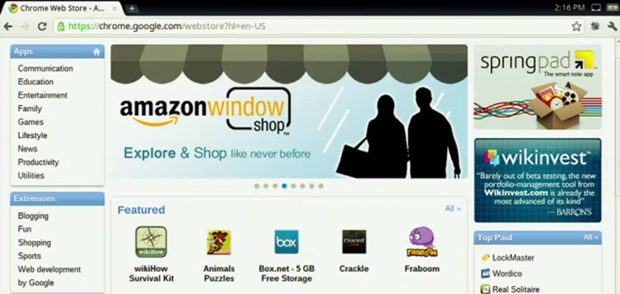
Rather than feature a clunky website, companies can now create rich online apps that are far more streamlined and interactive than your average webpage. The New York Timesshows off their app--a beautiful online newspaper that goes beyond the typical port-the-text-and-photos-from-newspaper format. It feels much sleeker than a website--it feels like it should be on an iPad. What's especially exciting is that this news can be accessed offline--but we'll come back to that in a moment.
Amazon, too, showed of its app--another great example of an online experience enhanced by HTML5 and app-like interactivity. Products can be dragged-and-dropped, and purchased with a simple click of a button.

And that's the most important part. As with iTunes, which stores your credit card information, Google will now store your payment data using your gmail.com address. Users can easily bounce around the app store, discovering new apps--from image editing software to radio programs to games--and purchase them just by logging in.
The goal, according to Pichai, is not just to provide users with a better experience, but to provide a central portal of online apps that will enable developers to earn money from their work.
Chrome OS
Here's what you've all been waiting for. Google unveiled its operating system, based entirely on the Chrome browser experience. This is not a typical OS--there is no desktop--just a browser. There is no taskbar or docking bay--just a list of Chrome tabs. There are no heavy program installs and OS updates--just the Internet, websites, and Chrome apps.
"On their computers, people live on the Web, yet most of the complexity and maintenance you deal with on the system has nothing to do with the browser," said Pichai. "If you were writing an operating system today, this is not how you would write it."
When you open up a netbook running the Chrome OS, you just see a browser window, because that is very much all it is. Users might be met with a log in screen, and all they must enter is their gmail.com address. As Pichai explained, it takes less than 60 seconds to set up for the first time--just a few simple clicks.
Instant On. Since the operating system is entirely web-based, starting the computer is no different than opening a Chrome browser window. It boots near instantly; it sleeps near instantly, and it resumes near instantly.
The Cloud. Since the Chrome OS is cloud-based, everything is synced to the Web. By logging into Google, users gain access to their email and downloaded apps. Users can edit documents on Google Docs or edit images using one of the downloadable apps--anything you can do on the web you can do on Chrome OS, and now with its app store, the number of browser-based applications could make this computer as versatile and stripped-down as an iPhone or Android.
Logging On. Multiple users can log in to one netbook using their Gmail addresses, and a guest access is available using incognito mode, meaning no browser history is captured.

Verizon Partnership. Google has partnered with Verizon to bringing cellular connection to netbooks, providing 3G connections. There are no contracts, plans will start at $9, and there are no overage or cancellation fees. The self-activation is easy, and takes about five minutes. Day passes are available, and you can also buy chunks of data for 1GB at a time. What's more, 100MB of data is available for free every two months.

Shipping Date. Google is launching a pilot program. Some lucky Google users will be sent a brandless laptop to test the Chrome OS; others, feel free to apply to join the program. Acer and Samsung will begin shipping Chrome netbooks in mid-2011, and other OEMs will follow.
Tech Specs. The pilot program netbook--the one Google is shipping to developers and certain select Googlers--will likely serve as the model for many companies. The netbook has a 12.1" display, a full-size keyboard, built-in 3G and Wi-Fi, webcam, 8 hours of active use, and more than 8 days of stand-by time. There is no Caps Lock key or function keys. There are no hard drives or spinning discs--but "more than enough gigabytes" to keep you going. Best of all, Google has made jail-breaking the netbook a built-in feature.
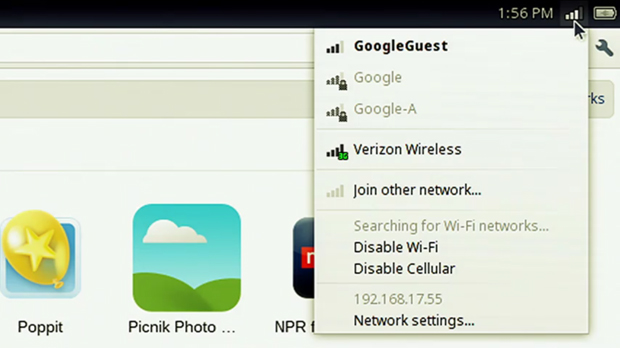
Benefits of Chrome OS
The central benefit that Google highlighted today was just how much bagged the Chrome OS shed by moving beyond the traditional operating system. By creating a browser-based system, the system, Google says, is far more secure, accessible, simple, and inexpensive.
Currently, to keep your computer updated, the onus is on the user. That means installing updates for Mac and Windows operating systems; that means installing updates for Microsoft Office or DIVX or Adobe Flash or Firefox. With Google's Chrome OS, all those updates are handled by the browser internally, and updated automatically. Essentially, an upgrade of the operating system will automatically be installed every few weeks; fixed for apps and plug-ins will be seamless and invisible. You can forget service packs.
For businesses, this is especially exciting, and many have already signed on to join the pilot program, from American Airlines to Logitech to Virgin America. It creates a stripped-down experience that can run on its own--without the struggles of costly IT support. Google said the OS is "magnitudes different" in costs of ownership and licensing.
The Chrome OS is the instant Web, the same experience everywhere, seamlessly sharing, always connected, secure, and forever new.
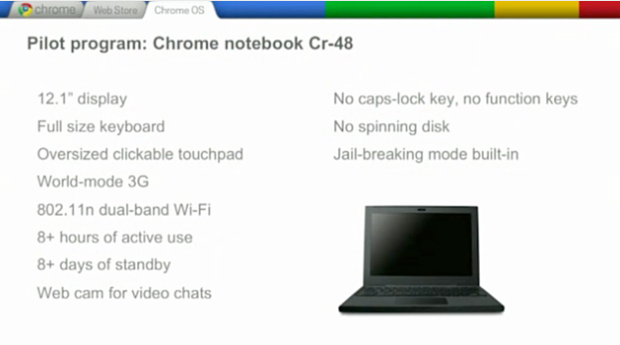
No comments:
Post a Comment